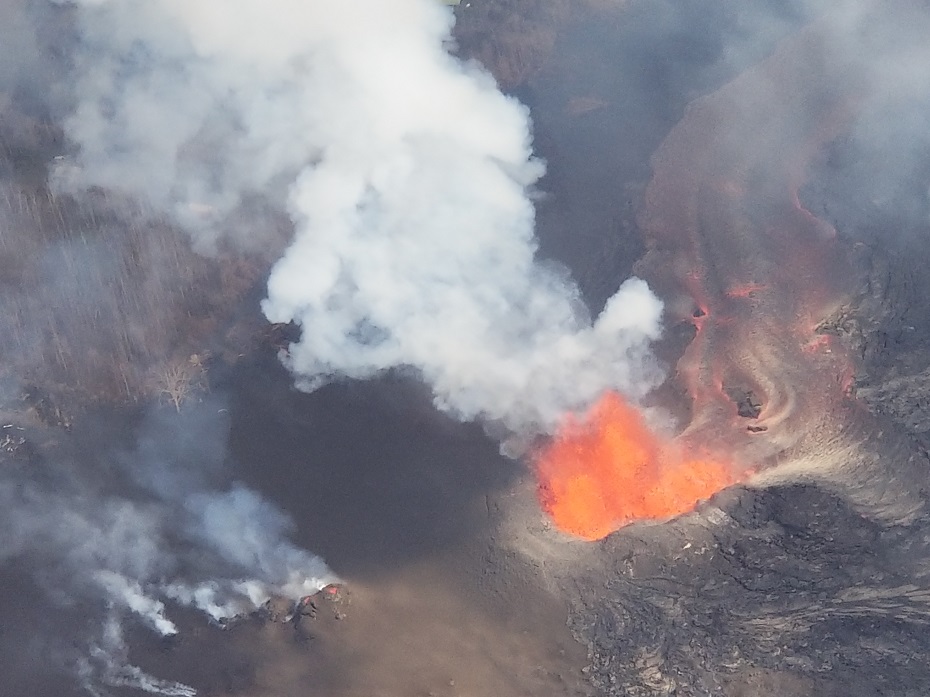
September 29 Update: Shortly after USGS raised the alert level, Kilauea Volcano erupted. More information is available here:
https://weatherboy.com/kilauea-volcano-erupts-on-hawaiis-big-island-alert-raised-to-red-warning/
Scientists with the USGS Hawaii Volcano Observatory (HVO) have raised the alert level on Kilauea Volcano on the Big Island of Hawaii in response to an increased level of seismic activity there; while there is no eruption right now, that could change soon. In a statement just released, HVO wrote, “Increased earthquake activity and changes in the patterns of ground deformation at Kīlauea’s summit began occurring as of approximately noon on September 29, 2021, indicating movement of magma in the subsurface. At this time, it is not possible to say with certainty if this activity will lead to an eruption — the activity may remain below ground, as occurred in August 2021 and early December 2020 (two weeks prior to the December 2020 – May 2021 summit eruption), when magma intruded beneath the caldera but did not erupt. However, an eruption in Kilauea’s summit region, within Hawai‘i Volcanoes National Park and away from infrastructure, is one potential outcome.”
Due to today’s activity, HVO has is raising the volcano alert level/aviation color code for Kilauea from ADVISORY/YELLOW to WATCH/ORANGE. The change takes place immediately.

The Volcano Hazards Program Office, through regional groups responsible for volcanoes of concern within their geographic area of concern, is responsible for issuing Aviation Codes and Volcanic Activity Alert Levels. Aviation Codes are green, yellow, orange, or red. When ground-based instrumentation is insufficient to establish that a volcano is at a typical background level of activity, it is simply “unassigned.” While green means typical activity associated with a non-eruptive state, yellow means a volcano is exhibiting signs of elevated unrest above known background levels. When a volcano exhibits heightened or escalating unrest with the increased potential of eruption, it jumps to orange. Finally, when an eruption is imminent with significant emission of volcanic ash expected in the atmosphere or an eruption is underway with significant emission of volcanic ash into the atmosphere, the code becomes red. Volcanic Activity Alert levels are normal, advisory, watch, or warning. As with aviation codes, if data is insufficient, it is simply labeled as “unassigned.” When the volcano is at typical background activity in a non-eruptive state, it is considered normal. If the volcano exhibits signs of elevated unrest above background level, an advisory is issued. If a volcano exhibits heightened or escalating unrest, a watch is issued while a warning is issued when a hazardous eruption is imminent.
The Hawaii Volcano Observatory (HVO) monitors the Kilauea, Mauna Loa, and Hualalai volcanoes on the Big Island of Hawaii. Mauna Loa is considered the world’s largest active volcano. None of Hawaii’s volcanoes are currently erupting, but seismicity remains above background levels at both Kilauea and Mauna Loa.
Kilauea last erupted in December after a long pause that followed the 2018 Lower East Rift Zone Eruption period. That eruption period ended in May, with no lava leaving the main caldera at the summit. In August, HVO had temporarily raised the alert to WATCH/ORANGE at Kilauea due to hints of sub-surface magma movement; however, that alert was downgraded when activity calmed without any eruption of lava at the surface.